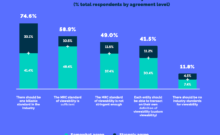Google launched its Chrome native ad blocker on Feb. 15 to a mix of fanfare and concern.
The blocker is based on standards set by the Coalition for Better Ads (CBA), of which Google is a founding member, aimed at improving the online experiences of the billions of people that use the web. While the move doesn’t block all ads, it does block annoying ads — or as the CBA puts it, those “that fall beneath a threshold of consumer acceptability” — including auto-playing video ads with sounds, prestitial ads, pop ups and more. With the Chrome web browser used by over half of those online (56.27 percent according to StatCounter), the introduction of the Chrome ad blocker creates yet another challenge for online advertisers to grapple with.
Google first raised the ad blocker last June, at the time pointing out that poor ad experiences were forcing web users to download and implement ad blockers at an increasing rate, 30 percent more than in 2016 to be precise. This, in turn, reduces the ability for publishers to continue creating free content and threatens the sustainability of the web ecosystem.
Critics point out that Google’s place in the online advertising market, where it controls over 42 percent of all online ads in the U.S. according to research firm eMarketer, make it an unlikely choice to marshal ad quality.
So which is it? Will the ad blocker improve user experiences and advertising’s efficacy or is this a land grab by one of the giants in the online advertising world?
Read More at The Original Article: www.cmswire.com









